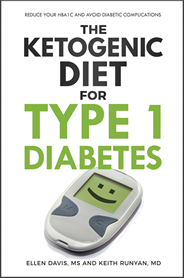Gestational Diabetes Treatment
Updated September 16, 2020. Medical review by Albert J Hart, MD

The current advice for a gestational diabetes treatment starts with an assumption that the underlying cause of this condition is being pregnant. The affected woman's blood sugar has risen and stayed above normal in response to various, pregnancy-associated hormonal changes and that the condition will need management throughout the pregnancy.
The major concern of gestational diabetes (GD) is that prolonged elevated blood sugar in the mother results in macrosomia, a condition in which the developing baby grows too big. Macrosomia puts the mother and baby at risk of injury during delivery, and often results in C-section births.
In addition, having high blood sugar during pregnancy can result in birth defects and low blood sugar or liver dysfunction at birth. And the long-lasting effects for the baby are also worrisome. When babies develop in a high blood sugar environment in the womb, it predisposes them to metabolic derangement later in life.
Many women are told that the condition of GD will most likely resolve itself after the baby is born. But this is not always true. The new research on this indicates that pregnancy is more likely a trigger for the diagnosis of an underlying insulin resistance. In other words, the woman has undiagnosed insulin resistance, and the pregnancy makes the insulin resistance worse.
In her excellent book, Real Food for Gestational Diabetes, Lily Nichols writes that the definition of gestational diabetes is most likely a type of diabetes first diagnosed during pregnancy. She sites the relevant statistics:
- Women diagnosed with GD have a high chance of developing prediabetes or type 2 diabetes later in life.
- Within 5 years of having a baby, up to 70% of women with GD will develop type 2 diabetes.
Other statistics I found during my research also support the idea that GD is an insulin-resistant condition. For instance, it is well known that insulin resistance is associated with high blood triglycerides and low HDL cholesterol. These are two of the markers associated with a diagnosis of Metabolic Syndrome.
A 2018 paper by Herrera et al. looked at these markers in women diagnosed with GD and found that elevated triglycerides during pregnancy correlated strongly with the risk of macrosomia, and increased metabolic risk after delivery. Another study compared a group of women with late pregnancy GD to a group of controls without GD, and found that the fasting blood glucose, fasting insulin, and HOMA-IR of women in the late pregnancy GDM group were all significantly higher than those in the control group. (HOMA-IR is a test that measures insulin resistance.)
Gestational Diabetes Treatment
If GD is undiagnosed insulin resistance, then it follows that the best treatment for insulin resistance would also work as a gestational diabetes treatment (as it would be for a potential type 2 diabetic condition). This is, of course, a low carb or ketogenic diet. Carbohydrates are the trigger for insulin resistance as I've explained elsewhere on this site. Hence, lowering carb intake is the first step towards controlling GD. You can start by downloading my free, basic Ketogenic Diet Plan. It's a step-by-step guide on how to start a ketogenic eating plan, and will give you a general idea of what the diet looks like.
I also strongly recommend that you get both of Lily Nichols' books. She is an expert in low-carb gestational diabetes treatment, and her books are chock-full of detailed, practical information. She has meal plans, food lists and other specific information for women who are pregnant and have been diagnosed with GD.


In addition, there's a new book out by Allison Herschede from the Type 1 Grit Facebook group called Grit Pregnancies: How to Have a Healthy Pregnancy and Normal Blood Sugars with Type 1 Diabetes:
All of my books are available in electronic PDF, and now in paperback on Amazon!
 |
 |
 |
|
Buy paperbook on Buy paperback on Amazon Buy the e-Book via Paypal |
Buy paperback on Buy paperback on Amazon Buy the e-Book via Paypal |
Buy paperback on Buy paperback on Amazon Buy the e-Book via PayPal |